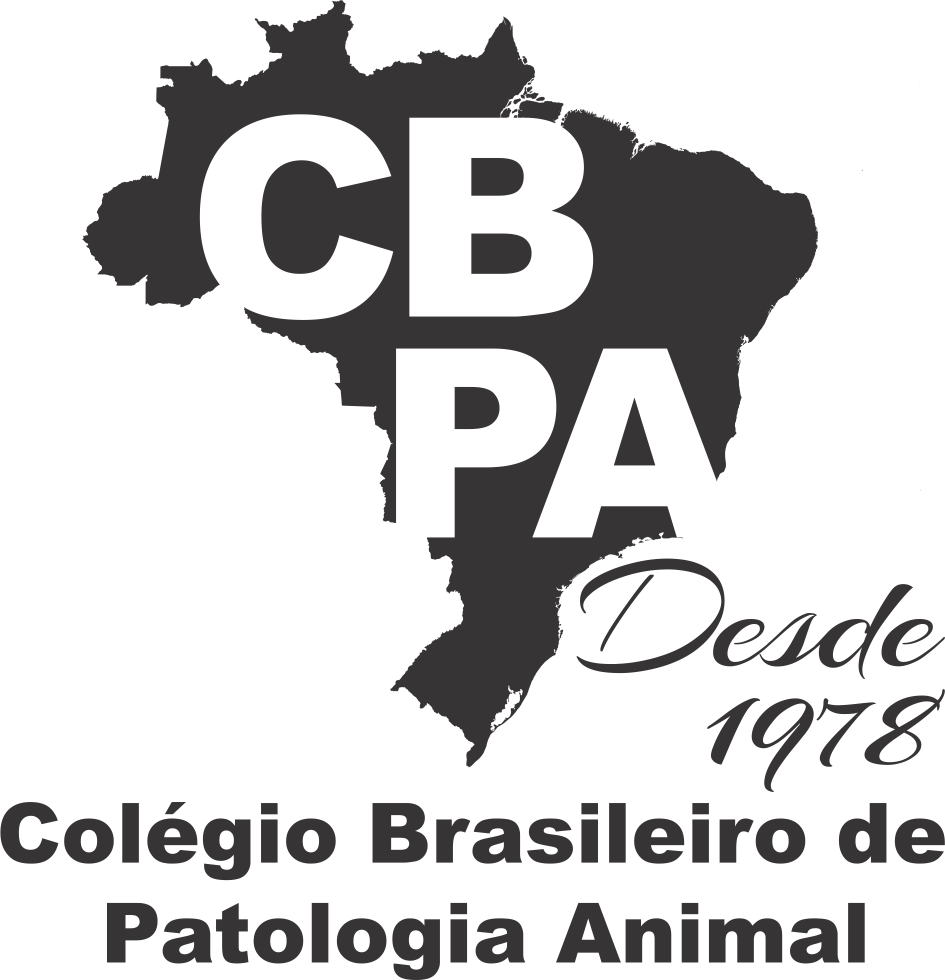Resultado da pesquisa (2)
Termo utilizado na pesquisa nephrology
#1 - Clinical-pathological and immunohistochemical evaluations of cardiac lesions in cats with chronic kidney disease
Abstract in English:
Chronic kidney disease (CKD) is characterized by irreversible morphostructural lesions that can progressively evolve to chronic renal insufficiency and kidney failure. It is known that the heart and kidneys are closely related, and that communication between these organs occurs through a variety of pathways; subtle physiological changes in one of them are compensated by the other. Histopathological cardiac evaluation through routine staining presents a limitation to identify specific or discreet lesions in the cardiomyocytes. This study aimed to evaluate serum troponin levels in cats with CKD, associated with clinical and pathological findings, as well as to correlate the morphostructural cardiac lesions to determine their distribution through macroscopic and histological assessments and anti-cardiac troponin C (cTnC) immunohistochemistry (IHC). To this end, 20 cats (18 diagnosed with CKD and two controls) were selected. Anti-human cTnC IHC was conducted after necropsy and separation in eight regions of each collected heart. Heart fragments from two cats without CKD were used as controls. The anti-human cTnC antibody is useful in detecting cardiac lesions and has shown decreased expression in cardiomyocytes of cats with CKD. Serum troponin was above the reference values in 11/18 (61.11%) animals and decreased expression for the cTnC antibody was observed in individual cardiomyocytes in 9/18 (50%) animals. It was verified that the number of regions with decreased expression for the cTnC antibody in cardiomyocytes is significantly correlated with serum troponin. The anti-human cTnC antibody has been found effective in detecting cardiac lesions and has shown decreased expression in the cardiomyocytes of cats with CKD. Correlation was observed between increased serum cTnI and loss of immunoreactivity at anti-cTnC antibody IHC in cats with CKD, which proves damage to cardiomyocytes secondary to kidney disease.
Abstract in Portuguese:
A doença renal crônica (DRC) é caracterizada por lesões morfoestruturais irreversíveis, que podem evoluir progressivamente para insuficiência renal crônica e falência renal. Sabe-se que o coração e os rins mantêm estreita relação e a comunicação entre esses órgãos ocorre por uma variedade de vias; alterações fisiológicas sutis em um desses órgãos são compensadas pelo outro. A avaliação histopatológica cardíaca mediante a colorações rotineiras são limitadas para identificar lesões específicas ou discretas em cardiomiócitos. O presente trabalho teve como objetivos avaliar os níveis séricos de troponina em gatos com DRC, associados aos achados clínico-patológicos, bem como correlacionar as lesões cardíacas morfoestruturais, a fim de determinar a distribuição destas, por meio da avaliação macroscópica, histológica e imuno-histoquímica com anti-cTnC. Neste estudo foram selecionados 20 gatos (18 diagnosticados com DRC e 2 animais controle). Para a aplicação da técnica de imuno-histoquímica anti-troponina C humana, necropsias foram realizadas e cada coração coletado separadamente em 8 regiões. Fragmentos do coração de 2 gatos sem lesão cardíaca foram utilizados como controle. O anticorpo anti-TnC humano é útil na detecção de lesões cardíacas e apresentou expressão diminuída em cardiomiócitos de gatos com DRC. Em 11/18 animais (61,11%) a troponina sérica encontrava-se acima dos valores de referência e foram observadas diminuição da expressão para anticorpo-cTnC em cardiomiócitos individuais em 9/18 (50%). Notou-se que o número de regiões com diminuição da expressão para anticorpo-cTnC em cardiomiócitos está significativamente correlacionado com a troponina sérica. O anticorpo anti-TnC humano se mostrou eficaz para detectar lesões cardíacas e demonstrou diminuição da expressão nos cardiomiócitos de gatos com DRC. Houve correlação entre o aumento da CTnI sérica e perda da imunorretividade na avaliação imuno-histoquímica com anticorpo anti-TnC em gatos com DRC o que comprova danos em cardiomiócitos secundários a doença renal.
#2 - Dystrophic mineralization in uremic dogs: an update
Abstract in English:
Pathological mineralization is the abnormal deposition of minerals in body tissues, previously injured or not. In these lesions, in addition to calcium, other minerals can be found at lower concentrations. Classically, mineralization is divided into two types: dystrophic and metastatic. However, currently, there is no consensus among researchers on the type of mineralization that occurs in uremic dogs. The objective of this study was to elucidate the type of pathological mineralization that occurs in dogs with uremic syndrome through the correlation of biochemical examinations with gross and histopathological changes, given the existence of controversial information on this theme in the specialized literature. The Shapiro‑Wilk, D’Agostino and Pearson tests were used to evaluate data normality distribution, and analysis of variance (ANOVA) was applied to compare the data between more than two groups. Additionally, the Dunnett’s multiple comparison test was used in the comparison between the Control Group (CG) and the Experimental Groups (G1, G2, and G3). Serum levels of urea, creatinine, total and ionized calcium, phosphorus, calcium-phosphorus product (CPP), parathyroid hormone (PTH), and albumin of 40 azotemic dogs with chronic kidney disease (CKD) were evaluated. Dogs were categorized by degree of azotemia (mild, moderate, and severe). Ionized hypocalcemia was observed in 97.5% (39/40) of the dogs, and no animals presented ionized hypercalcemia. Hyperphosphatemia was frequent (62.5%), especially in dogs with severe azotemia. PTH concentration increased with progression of azotemia, and high PTH levels were verified in 100% of the dogs with severe azotemia. CPP >60mg2/dl2 was observed in 75% (30/40) of the dogs. Of the 29 dogs that died during the study period, 16 were necropsied. Soft tissue mineralization was observed in 93.7% (15/16) of these dogs at gross and histopathological evaluation (HE and Von Kossa), regardless of the degree of azotemia, in nine organs/tissues: kidneys (75%), lungs (50%), stomach (31.2%), heart (25%), larynx (25%), intercostal muscles (25%), aorta (6.2%), intestines (6.2%), and tongue (6.2%). In one animal, the serosa of all segments of the small intestine showed whitish, rough, irregular, multifocal plaques of varying sizes, confirmed by histopathology as dystrophic mineralization of the longitudinal outer muscular layer, which presented necrosis of coagulation and of the intestinal serosa. This intestinal lesion has not been described in dogs with uremic syndrome to date. In conclusion, the laboratory and histopathologic data previously described, especially regarding tissue and vascular mineralization, which occur in association with previous degenerative/necrotic lesions in the absence of hypercalcemia in dogs with CKD, assist with clarifying inconsistencies found in the existing literature. Therefore, conceptually, mineralization that occurs in uremic dogs should be considered dystrophic.
Abstract in Portuguese:
Mineralização patológica é a deposição anormal de minerais em tecidos previamente lesados ou não. Nessas lesões, além do cálcio, outros minerais podem ser encontrados em concentrações inferiores. Classicamente, as mineralizações são divididas em dois tipos: distrófica e metastática. Contudo, atualmente, ainda não há consenso entre os pesquisadores sobre o tipo de mineralização que ocorre em cães urêmicos. Objetivou-se com esse estudo elucidar o tipo de mineralização patológica que ocorre em cães com síndrome urêmica através da correlação de exames bioquímicos com alterações macroscópicas e histopatológicas, visto a existência de informações controversas na literatura especializada. Os dados obtidos foram submetidos ao teste de Shapiro-Wilk e teste de D’Agostino e Pearson para avaliação da normalidade da distribuição e para comparação de dados em mais de dois grupos foi utilizado o teste ANOVA. Adicionalmente, o teste de comparações múltiplas de Dunnett permitiu a comparação entre o grupo controle (GC) com os demais grupos (G1, G2 e G3). Foram avaliados os níveis séricos de ureia, creatinina, cálcio total e ionizado, fósforo, produto cálcio-fósforo (PCF), PTH e albumina de 40 cães azotêmicos com doença renal crônica (DRC). Os cães foram classificados quanto ao grau de azotemia (leve, moderada e severa). Verificou-se hipocalcemia ionizada em 97,5% (39/40) dos cães e, em nenhum animal houve hipercalcemia ionizada. Hiperfosfatemia foi frequente (62,5%), principalmente em cães com azotemia severa. A concentração do PTH aumentou conforme a progressão da azotemia, encontrando-se elevada em 100% dos cães com azotemia severa. Em 75% (30/40) dos cães o PCF foi superior a 60mg2/dl2. Durante o estudo, 29 cães morreram, sendo 16 desses necropsiados. Em 93,7% (15/16) desses cães observou-se mineralização de tecidos moles, durante a avaliação macroscópica e histopatológica (HE e Von Kossa), independentemente do grau de azotemia, em nove órgãos/tecidos: rins (75%), pulmões (50%), estômago (31,2%), coração (25%), laringe (25%), músculos intercostais (25%), aorta (6,2%), intestino (6,2%) e língua (6,2%). Adicionalmente, em um animal verificou-se na serosa de todos os segmentos do intestino delgado placas multifocais brancacentas, rugosas, irregulares de tamanhos variados, cuja histopatologia confirmou tratar-se de mineralização distrófica da camada longitudinal muscular externa que apresentava necrose de coagulação e da serosa intestinal. Essa lesão intestinal nunca havia sido descrita em cães com síndrome urêmica. Em suma, os dados laboratoriais e histopatológicos aqui descritos, sobretudo, no que se refere à mineralização tecidual e vascular, que ocorrem relacionadas a lesões degenerativo-necróticas prévias, na ausência de hipercalcemia, em cães com DRC, ajudam a esclarecer as incongruências existentes na literatura. Por conseguinte, conceitualmente, as mineralizações que ocorrem em cães urêmicos devem ser consideradas distróficas.








